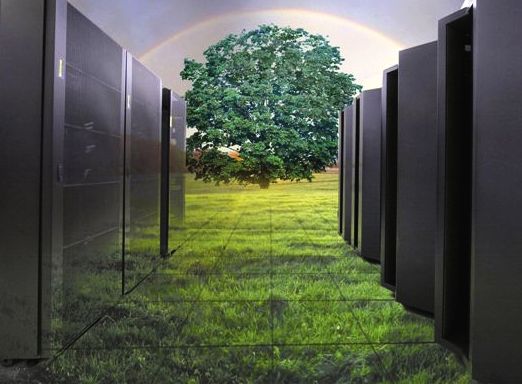Greenpeace Questions Apple’s Green Commitment

A Greenpeace report has raised questions about Apple’s promise to use 100 percent renewable energy sources in its data centre facilities
The environmental group Greenpeace has issued a report raising questions about Apple’s commitment to using 100 percent renewable energy sources to power its facilities, particularly a new data centre Apple opened in Maiden, North Carolina.
Greenpeace rescored Apple’s performance, updating an April analysis of the clean energy performance of Apple and several other companies, all of which have some or all of their operations based in the cloud. The other ranked companies range from Hewlett-Packard, IBM and Microsoft to Facebook, Twitter and Google.
No ‘realistic path’
“Despite a welcome commitment by Apple in May that its data centres will be coal-free and powered by 100 percent renewable energy, the analysis reveals that Apple still lacks a plan that outlines a realistic path to eliminate its reliance on coal to power its iCloud,” Greenpeace stated on 12 July.
 Apple iCloud is a service that allows users to back up data on their Macs, iPads, iPhones and other devices to the cloud, which operates from the North Carolina data centre.
Apple iCloud is a service that allows users to back up data on their Macs, iPads, iPhones and other devices to the cloud, which operates from the North Carolina data centre.
A large section of Apple’s own website is devoted to its environmental commitment and practices. On it, Apple states four of its data centres–in Austin, Texas, Sacramento, California, Munich, Germany, and Cork, Ireland – are 100 percent powered by renewable energy.
As to the North Carolina data centre, Apple has stated: “Our goal is to meet the needs of the Maiden facility using 100 percent renewable energy by the end of 2012… We have major projects under way to achieve this goal – including building the nation’s largest private solar arrays and building the largest operating non-utility fuel cell installation.”
But Greenpeace is skeptical that Apple can reach that goal and noted that Duke Energy, the utility that serves North Carolina, still relies mostly on coal and nuclear power for electrical generation and that only 4 percent of its generating capacity will come from renewables by 2030.
Greenpeace is calling on Apple to use renewable electricity from onsite generation to directly power its North Carolina facility and use grid power from Duke Energy only for backup.
Shortcomings
It also is urging Apple to use biogas to directly power fuel cells at the Maiden data centre and to “invest directly in new renewable energy generation in North Carolina rather than buying renewable credits to ‘green’ Duke Energy’s dirty electricity”.
The group also wants Apple to use its leverage as a major Duke Energy customer to get the utility to use more renewable energy sources and to make access to renewable energy sources a top priority in siting future Apple data centres.
The Greenpeace report assigns each company studied an overall Clean Energy Index, expressed as a percentage, and records the use of coal and nuclear sources for the electricity it consumes. It also grades companies on the transparency of their energy use disclosures, how they site their infrastructure, their energy efficiency and greenhouse gas mitigation, their use of renewables and their clean energy advocacy.
Apple actually improved some of its performance in the July rescoring of the April report. Its Clean Energy Index improved to 22.6 percent from 15.3 percent, its use of coal-generated electricity fell to 33.5 percent from 55.1 percent and its use of nuclear fell to 11.6 percent from 27.8 percent.
Greenpeace says it’s next going to rescore the Clean Energy Index for Amazon and Microsoft later this year.
Do you know the secrets of Wi-Fi? Take our quiz.